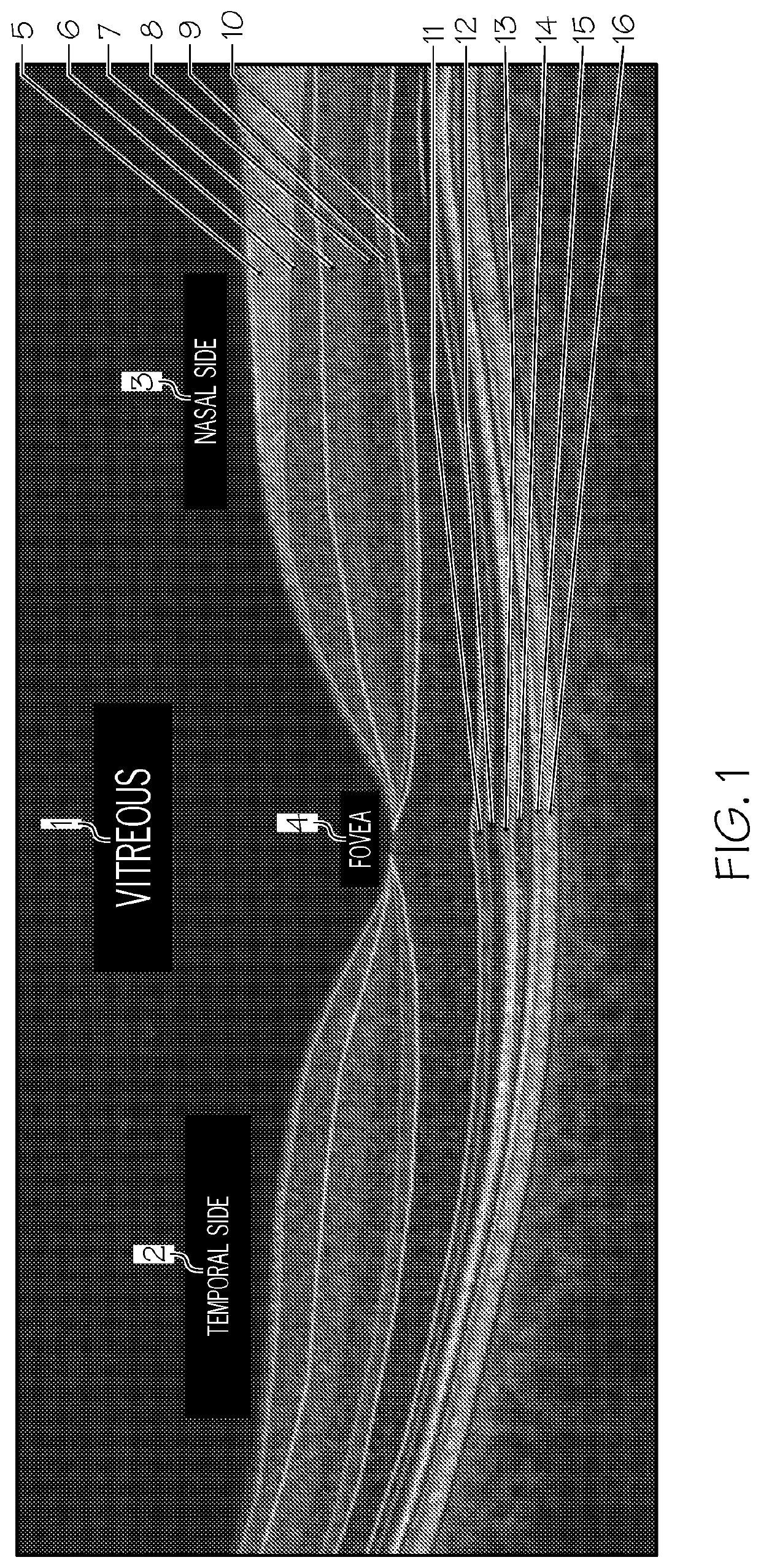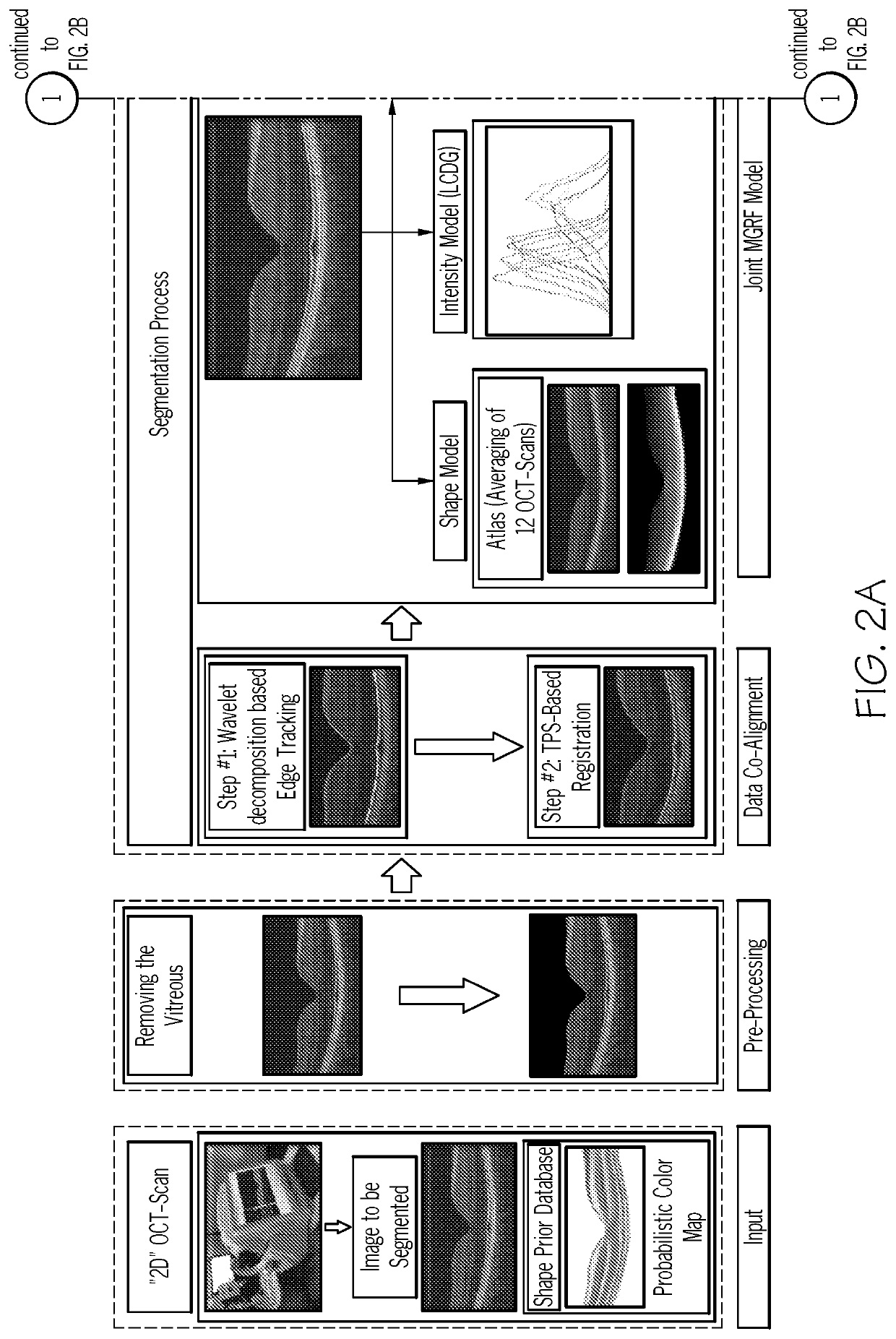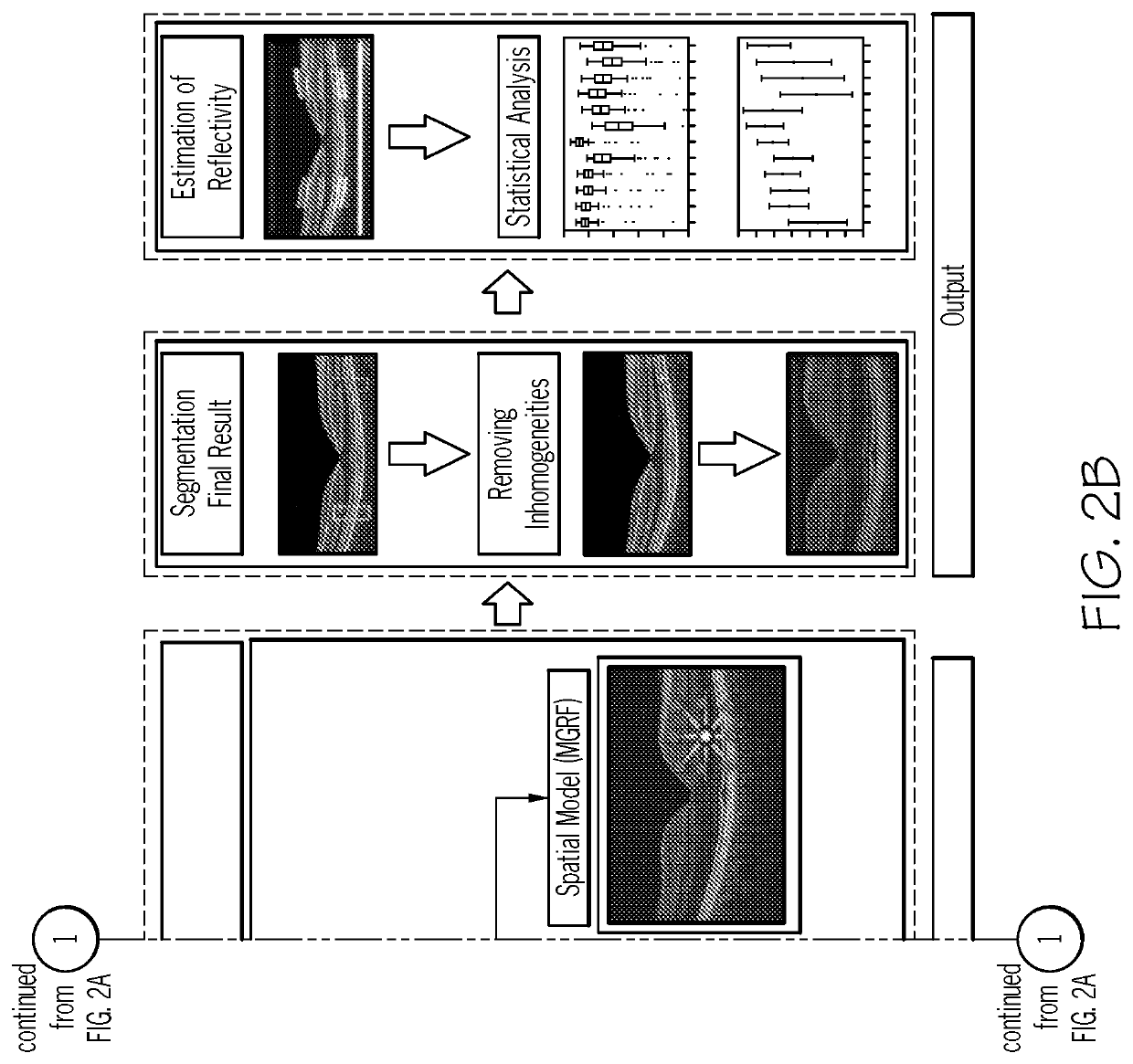Automated methods for the objective quantification of retinal characteristics by retinal region and diagnosis of retinal pathology
a technology of objective quantification and retinal characteristics, applied in the field of clinical diagnosis and monitoring of ocular pathologies utilizing spectral domain optical coherence tomography, can solve the problems of limited objective quantitative data, inability to fully capture, and inability to interpret sd-o
- Summary
- Abstract
- Description
- Claims
- Application Information
AI Technical Summary
Benefits of technology
Problems solved by technology
Method used
Image
Examples
example 1
[0062]This example illustrates development of a retinal SD-OCT segmentation algorithm in accordance with embodiments of the invention.
A. Data Collection
[0063]Subjects were recruited at the Kentucky Lions Eye Center, University of Louisville Department of Ophthalmology and Visual Sciences, Louisville, Ky. between June 2015 and December 2015. Informed consent was obtained from all participants. Subjects with normal retinas ranging in age from 10 to 79 years old were included in the study. Past medical history, ophthalmologic history, smoking status, and current medications were obtained via chart review and subject interview. Persons with history significant for any retinal pathology, history significant for diabetes mellitus, high myopia defined as a refractive error greater than or equal to 6.00 diopters, and tilted OCT image were excluded from participation in the study. SD-OCT scans were prospectively collected from 165 noiuial subjects using the Zeiss Cirrus HD-OCT 5000. SD-OCT d...
example 2
[0094]This example illustrates derivation of quantitative data from segmented SD-OCT images in accordance with an embodiment of the invention. In particular the concept is illustrated utilizing reflectivity as the quantified characteristic and development of a normalized reflectivity scale.
Quantitative Data Derived from SD-OCT Images
[0095]Several quantitative data can be derived from the segmented SD-OCT images in order to optimally characterize retinal morphology. Specific embodiments herein are described in terms of the reflectivity measurements that were obtained from two regions per scan, comprising the thickest portions of the retina on the nasal and temporal sides of the foveal peak. Although the embodiment is described and illustrated utilizing reflectivity, it will be apparent to the person of skill in the art that the methods are applicable for other quantifiable retinal characteristics.
[0096]Mean reflectivity is expressed on a normalized scale, calibrated such that the for...
example 3
[0097]This example illustrates application of an embodiment of the automated segmentation algorithm to an analysis of retinal layer reflectivity as a function of gender, age, and demographic. The reflectivity unit (RU) data is summarized by age in FIG. 9.
[0098]After the segmentation protocol is applied to the collected images, analysis of the reflectivity measure across the different decades of life is undertaken. Embodiments of the segmentation approach were first validated using “ground truth” for subjects, which was collected from 165 subjects aged 10-79 years. Subjects with high myopia (≤−6.0 diopters), and tilted OCT were excluded. This ground truth was created by manual delineations of retina layers reviewed with 4 different retina specialists (SS, AP, AH, DS).
[0099]This study was reviewed and approved by the Institutional Review Board at the University of Louisville. A retrospective chart review was performed to identify subjects between 13 and 97 years of age without signifi...
PUM
 Login to View More
Login to View More Abstract
Description
Claims
Application Information
 Login to View More
Login to View More - R&D
- Intellectual Property
- Life Sciences
- Materials
- Tech Scout
- Unparalleled Data Quality
- Higher Quality Content
- 60% Fewer Hallucinations
Browse by: Latest US Patents, China's latest patents, Technical Efficacy Thesaurus, Application Domain, Technology Topic, Popular Technical Reports.
© 2025 PatSnap. All rights reserved.Legal|Privacy policy|Modern Slavery Act Transparency Statement|Sitemap|About US| Contact US: help@patsnap.com



